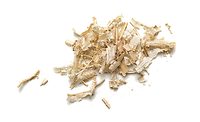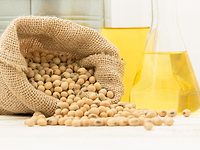Waterborne, Partly Bio-Based PUDs for More Sustainable Textile Coatings

Image credit: Tatiana Gasich, iStock, via Getty Images.
The Trend Toward Carbon-Neutral Textiles
The stage is set for change. Legislative and regulatory pressure is growing, via actions like the E.U. Strategy for Sustainable and Circular Textiles. Credible certification and labeling are helping to increase value-chain transparency, and consumers are starting to demonstrate higher willingness to pay for textiles, when provided with third-party-verified information about a product’s environmental benefits.
Against this backdrop, collaboration is key to driving the sustainability transition in textile coatings. That means working not only with other fiber and fabric players, but also with other industries whose sustainability best practices, technologies, and innovations can be applied to textiles.
How Functional Coatings Support Textile Sustainability
Of course, textile coatings come with some built-in sustainability benefits. Functional coatings – making fabrics waterproof, breathable, resistant to abrasion, and more – deliver properties that boost durability as well as performance, and thereby contribute to reducing waste.
The Power of PUDs
Many textile brand owners have set ambitious targets to reduce their greenhouse gas emissions. The majority of CO2 emissions come from raw materials. Our portfolio of waterborne polyurethane dispersions (PUDs) is already making a positive impact in increasing sustainability and reducing emissions. The water-based textile coatings in our INSQIN® range have a global warming potential (GWP) up to 45% lower than solvent-based polymer resin equivalents – helping functional textile manufacturers reduce their environmental footprint. As a bluesign® system partner, we are demonstrating that our operations meet the highest standards for process control and resource use. We are also demonstrating that our products comply with the bluesign system substance list (BSSL), a comprehensive list of restricted substances that takes common restricted substances lists (RSLs) into account.
What’s more, the partly bio-based PUDs in our Impranil® CQ portfolio deliver a further GWP reduction of up to 48% at the same performance of conventional products – making textile coatings even more sustainable. Our continuously growing partly bio-based portfolio, containing 34–56% renewable carbon, can be easily dropped into existing formulations and is therefore an even more sustainable alternative for textile manufacturers.
The use of renewable feedstock attributed via the mass balance approach in textile raw materials can be another key step towards more climate-neutral textile products. Mass balancing ensures the incorporation of specific feedstock material, such as biomass, early in the value chain. Our mass balance approach is certified by the third-party International Sustainability & Carbon Certification (ISCC) PLUS standard.
Impact From End to End
In addition to supporting more eco-friendly fabric production, water-based PUDs also play an important role at the other end of the product life cycle. After all, although circularity is built on the pillars of reuse, recovery, and recycling, these outcomes are not always possible. For instance, it’s difficult to achieve this for coated textiles in applications such as agricultural or personal care products.
Biodegradable polymers are therefore another valuable solution for enabling the textiles industry’s sustainability transition. Our Impranil DLN-SD, for instance, is a high-performance coating material that shows up to 66% degradation in water in 28 days (OECD test standard 301F) – thereby helping to lower the risk of microplastic leakage from discarded textiles. With the end-of-life impact of textiles being another key challenge for the industry (especially while effective textile recycling infrastructure remains a work in progress), biodegradable solutions have an important contribution to make.
Textile Recycling: An Obstacle to Overcome
While textile coatings support sustainability via their intrinsic functionality, they also make it harder to recycle garments at their end of life. Globally, solutions for separating waste textiles are still lacking. So it’s particularly important that we, as a leading industry player in textile coatings, closely engage in collaborations to develop new and improved textile recycling technologies, enabling the de-coating and reuse of materials to produce new fibers.
The (eventual) success of textile recycling will depend on the suitability of the materials fed into the system. This means coatings need to be designed for circularity, using raw materials and processes that maximize the value we can recover from used products.
Looking for a reprint of this article?
From high-res PDFs to custom plaques, order your copy today!









